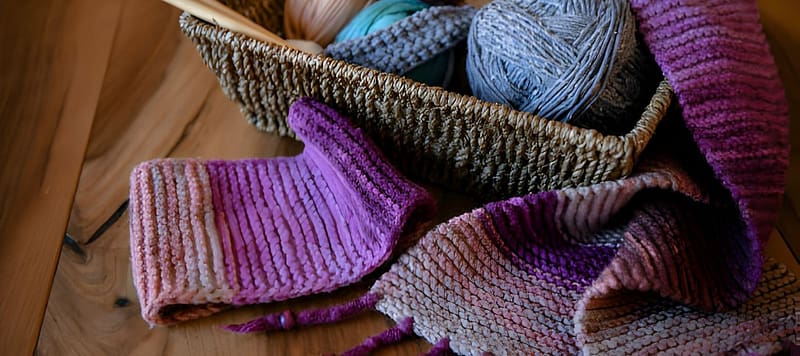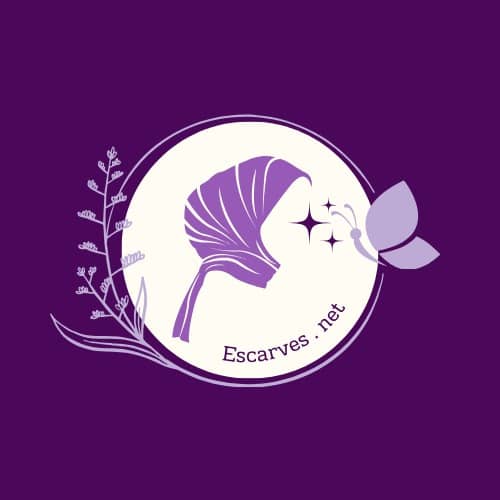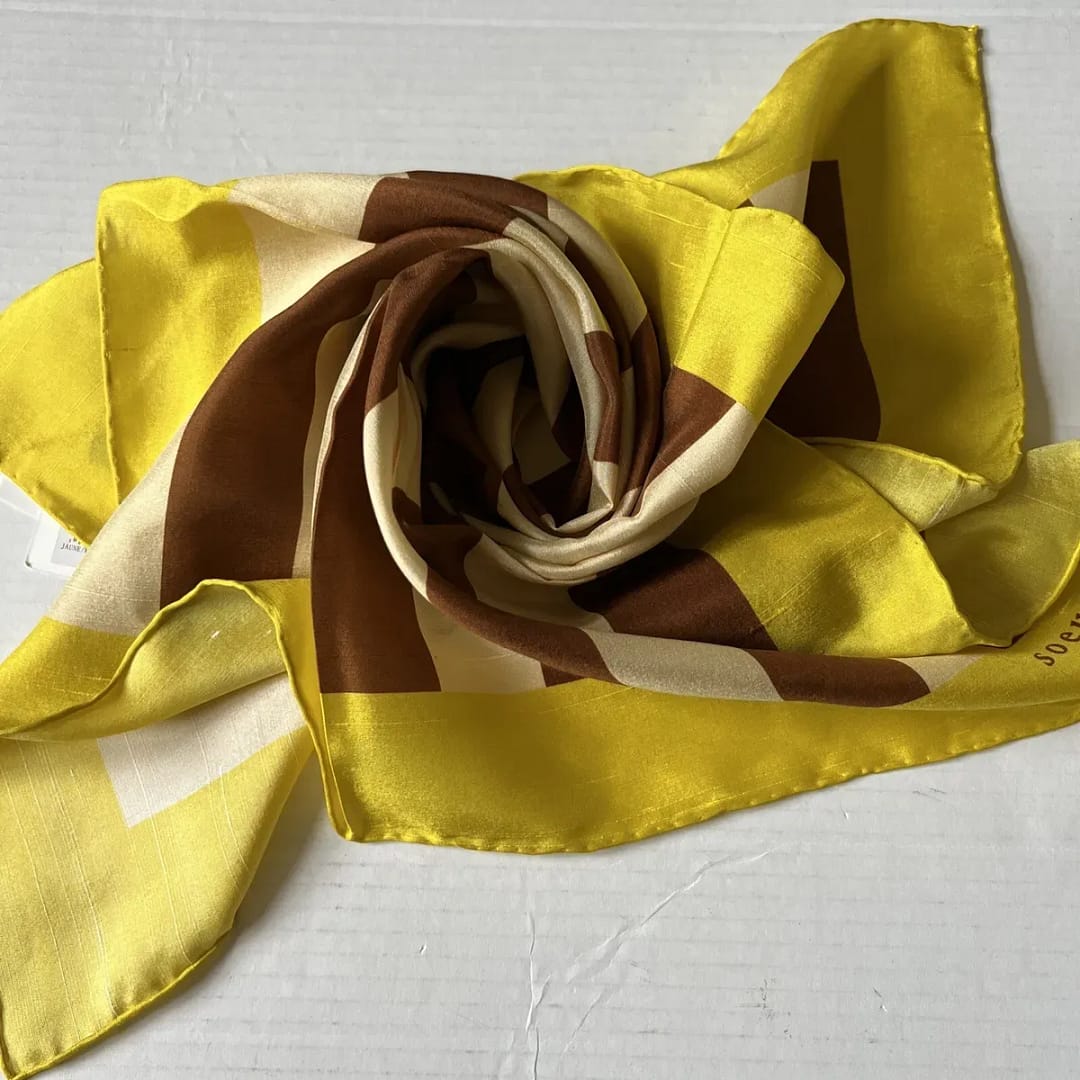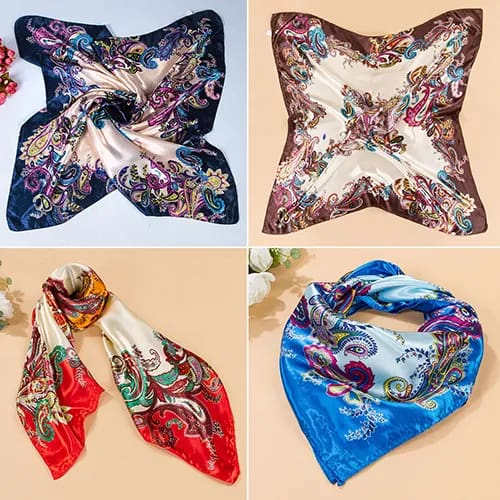A Comprehensive Guide to Creating Stunning Knitted Scarves

Knitting is a timeless craft that allows us to create beautiful and functional pieces of clothing. Whether you’re a beginner or an experienced knitter, mastering the art of knitting can be a rewarding and fulfilling journey. In this comprehensive guide, I will take you through the process of creating stunning knitted scarves.
Knitting basics tools and materials
Before diving into the world of knitting, it’s important to familiarize yourself with the basic tools and materials you’ll need. The essential tools for knitting include knitting needles, stitch markers, a tapestry needle, and scissors. As for the materials, you’ll need yarn that suits your project. You can choose from a variety of yarn types, including wool, acrylic, cotton, and blends. Each type of yarn has its unique characteristics, so it’s important to consider factors such as warmth, softness, and durability when selecting yarn for your knitted scarf.
Types of stitches used in knitting scarves
The beauty of knitting lies in the intricate patterns and stitches that can be created. Several basic stitches are commonly used in knitting scarves. The knit stitch, also known as the garter stitch, is the most basic and creates a bumpy texture. The purl stitch, on the other hand, creates a smooth and flat texture. Combining these two stitches allows you to create a variety of patterns, such as the stockinette stitch, rib stitch, and seed stitch. Experimenting with different stitch patterns will add depth and visual interest to your knitted scarf.
Choosing the right yarn for your knitted scarf
When it comes to choosing the right yarn for your knitted scarf, there are a few factors to consider. First, consider the level of warmth you want your scarf to provide. If you’re looking for a cozy, winter scarf, opt for a bulky or chunky yarn. For a lightweight and breathable scarf, choose a yarn with a lighter weight. Additionally, consider the drape and texture you want your scarf to have. Yarns with a higher percentage of natural fibers, such as wool or alpaca, will create a softer and more luxurious feel. Lastly, consider the color and pattern of your yarn. Variegated yarns can create stunning visual effects in your scarf, while solid colors allow the texture and stitches to take center stage.
Essential knitting techniques for scarf patterns
To create stunning knitted scarves, it’s important to master some essential knitting techniques. One such technique is casting on, which is the process of creating the first row of stitches on your knitting needle. There are several methods for casting on, including the long-tail cast-on and the knitted cast-on. Another essential technique is binding off, which is the process of finishing your scarf and securing the stitches. Other techniques include increasing and decreasing stitches, which allow you to shape your scarf, and joining yarn, necessary when changing colors or adding new yarn.
Knitting patterns for beginners
If you’re new to knitting, starting with simple and beginner-friendly patterns is best. One such pattern is the basic garter stitch scarf, which only requires the knit stitch. Another beginner-friendly pattern is the seed stitch scarf, which alternates between knit and purl stitches. As you gain more confidence and experience, you can move on to more complex patterns, such as the rib stitch scarf or the basketweave stitch scarf. These patterns incorporate combinations of knit and purl stitches to create textured and visually appealing scarves.
Intermediate knitting patterns for more advanced scarves
Once you’ve mastered the basics, you can challenge yourself with intermediate knitting patterns for more advanced scarves. One such pattern is the cable stitch scarf, which creates the illusion of twisted cables running through the fabric. Another intermediate pattern is the lace stitch scarf, which incorporates intricate lace patterns. These patterns require more attention to detail and may involve techniques such as yarn overs and decreases. Exploring intermediate patterns will allow you to create scarves that are not only functional but also showcase your knitting skills.
Advanced knitting techniques for intricate scarf designs
For those seeking a greater challenge, advanced knitting techniques open up a world of possibilities for intricate scarf designs. Fair Isle knitting, also known as stranded knitting, involves working with multiple colors in a single row to create intricate colorwork patterns. Intarsia knitting allows you to create large blocks of color or complex shapes within your scarf. These techniques require careful attention to tension and yarn management to ensure your scarf turns out beautifully.
Tips for knitting with different types of yarn
As you progress in your knitting journey, you’ll likely encounter different types of yarn. Each type of yarn has its own unique characteristics and requires specific techniques for optimal results. When working with wool, it’s important to be mindful of the natural elasticity of the fiber and adjust your tension accordingly. Acrylic yarns are great for beginners as they are easy to care for and come in various colors. Cotton yarns, on the other hand, have less stretch and drape differently, requiring adjustments to your knitting technique. Experimenting with different yarn types will broaden your knitting skills and allow you to create scarves with different textures and characteristics.
Finishing touches: blocking and adding embellishments to your knitted scarf
Once your knitted scarf is complete, there are a few finishing touches you can add to enhance its appearance. Blocking is a process that involves wetting your scarf and shaping it to the desired dimensions. This helps even out your stitches and give your scarf a more polished look. Adding embellishments, such as tassels, pom-poms, or buttons, can also add a personal touch to your scarf. Experiment with different embellishments to create a unique and customized scarf that reflects your style.
Caring for your knitted scarf
To ensure the longevity of your knitted scarf, proper care is essential. Hand washing is generally recommended for knitted scarves, as it is gentler on the fibers. Use a mild detergent or wool wash and gently squeeze out excess water without wringing or twisting the scarf. Lay it flat to dry, avoiding direct sunlight. If necessary, you can lightly steam or iron your scarf to remove any wrinkles. Proper care will keep your knitted scarf looking beautiful for years to come.
Conclusion
Knitting is a versatile and creative craft that allows you to create stunning and unique scarves. By mastering the basic techniques, exploring different patterns, and experimenting with various yarns, you can create scarves that not only keep you warm but also showcase your knitting skills. Whether you’re a beginner or an experienced knitter, this comprehensive guide has provided you with the knowledge and inspiration to embark on your knitting journey. So grab your needles, choose your yarn, and start creating your own stunning knitted scarves.
Knitting is a timeless craft that allows us to create beautiful and functional pieces of clothing. Whether you’re a beginner or an experienced knitter, mastering the art of knitting can be a rewarding and fulfilling journey. In this comprehensive guide, I will take you through the process of creating stunning knitted scarves.
Knitting basics tools and materials
Before diving into the world of knitting, it’s important to familiarize yourself with the basic tools and materials you’ll need. The essential tools for knitting include knitting needles, stitch markers, a tapestry needle, and scissors. As for the materials, you’ll need yarn that suits your project. You can choose from a variety of yarn types, including wool, acrylic, cotton, and blends. Each type of yarn has its unique characteristics, so it’s important to consider factors such as warmth, softness, and durability when selecting yarn for your knitted scarf.
Types of stitches used in knitting scarves
The beauty of knitting lies in the intricate patterns and stitches that can be created. Several basic stitches are commonly used in knitting scarves. The knit stitch, also known as the garter stitch, is the most basic and creates a bumpy texture. The purl stitch, on the other hand, creates a smooth and flat texture. Combining these two stitches allows you to create a variety of patterns, such as the stockinette stitch, rib stitch, and seed stitch. Experimenting with different stitch patterns will add depth and visual interest to your knitted scarf.
Choosing the right yarn for your knitted scarf
When it comes to choosing the right yarn for your knitted scarf, there are a few factors to consider. First, consider the level of warmth you want your scarf to provide. If you’re looking for a cozy, winter scarf, opt for a bulky or chunky yarn. For a lightweight and breathable scarf, choose a yarn with a lighter weight. Additionally, consider the drape and texture you want your scarf to have. Yarns with a higher percentage of natural fibers, such as wool or alpaca, will create a softer and more luxurious feel. Lastly, consider the color and pattern of your yarn. Variegated yarns can create stunning visual effects in your scarf, while solid colors allow the texture and stitches to take center stage.
Essential knitting techniques for scarf patterns
To create stunning knitted scarves, it’s important to master some essential knitting techniques. One such technique is casting on, which is the process of creating the first row of stitches on your knitting needle. There are several methods for casting on, including the long-tail cast-on and the knitted cast-on. Another essential technique is binding off, which is the process of finishing your scarf and securing the stitches. Other techniques include increasing and decreasing stitches, which allow you to shape your scarf, and joining yarn, necessary when changing colors or adding new yarn.


Knitting patterns for beginners
If you’re new to knitting, starting with simple and beginner-friendly patterns is best. One such pattern is the basic garter stitch scarf, which only requires the knit stitch. Another beginner-friendly pattern is the seed stitch scarf, which alternates between knit and purl stitches. As you gain more confidence and experience, you can move on to more complex patterns, such as the rib stitch scarf or the basketweave stitch scarf. These patterns incorporate combinations of knit and purl stitches to create textured and visually appealing scarves.
Intermediate knitting patterns for more advanced scarves
Once you’ve mastered the basics, you can challenge yourself with intermediate knitting patterns for more advanced scarves. One such pattern is the cable stitch scarf, which creates the illusion of twisted cables running through the fabric. Another intermediate pattern is the lace stitch scarf, which incorporates intricate lace patterns. These patterns require more attention to detail and may involve techniques such as yarn overs and decreases. Exploring intermediate patterns will allow you to create scarves that are not only functional but also showcase your knitting skills.
Advanced knitting techniques for intricate scarf designs
For those seeking a greater challenge, advanced knitting techniques open up a world of possibilities for intricate scarf designs. Fair Isle knitting, also known as stranded knitting, involves working with multiple colors in a single row to create intricate colorwork patterns. Intarsia knitting allows you to create large blocks of color or complex shapes within your scarf. These techniques require careful attention to tension and yarn management to ensure your scarf turns out beautifully.
Tips for knitting with different types of yarn
As you progress in your knitting journey, you’ll likely encounter different types of yarn. Each type of yarn has its own unique characteristics and requires specific techniques for optimal results. When working with wool, it’s important to be mindful of the natural elasticity of the fiber and adjust your tension accordingly. Acrylic yarns are great for beginners as they are easy to care for and come in various colors. Cotton yarns, on the other hand, have less stretch and drape differently, requiring adjustments to your knitting technique. Experimenting with different yarn types will broaden your knitting skills and allow you to create scarves with different textures and characteristics.
Finishing touches: blocking and adding embellishments to your knitted scarf
Once your knitted scarf is complete, there are a few finishing touches you can add to enhance its appearance. Blocking is a process that involves wetting your scarf and shaping it to the desired dimensions. This helps even out your stitches and give your scarf a more polished look. Adding embellishments, such as tassels, pom-poms, or buttons, can also add a personal touch to your scarf. Experiment with different embellishments to create a unique and customized scarf that reflects your style.
Caring for your knitted scarf
To ensure the longevity of your knitted scarf, proper care is essential. Hand washing is generally recommended for knitted scarves, as it is gentler on the fibers. Use a mild detergent or wool wash and gently squeeze out excess water without wringing or twisting the scarf. Lay it flat to dry, avoiding direct sunlight. If necessary, you can lightly steam or iron your scarf to remove any wrinkles. Proper care will keep your knitted scarf looking beautiful for years to come.

Conclusion
Knitting is a versatile and creative craft that allows you to create stunning and unique scarves. By mastering the basic techniques, exploring different patterns, and experimenting with various yarns, you can create scarves that not only keep you warm but also showcase your knitting skills. Whether you’re a beginner or an experienced knitter, this comprehensive guide has provided you with the knowledge and inspiration to embark on your knitting journey. So grab your needles, choose your yarn, and start creating your own stunning knitted scarves.
To block a knitted scarf, you need to wet it, shape it on blocking mats, pin the edges to hold its shape, allow it to dry completely, and then remove the pins. This process helps set the scarf’s shape and improve its appearance.
Yes, oversized knitted scarves remain a trendy accessory, offering both warmth and a stylish statement. They are perfect for layering and adding a cozy touch to any outfit.
Knitted scarves can be styled in various ways, including draped over the shoulders for a casual look, wrapped around the neck in a loop for added warmth, or even knotted loosely for a chic touch.
Absolutely! Knitted scarves can add a touch of texture and personality to formal attire. Opt for a sleek, solid-colored scarf in a luxurious yarn to complement your formal ensemble while keeping you cozy.
Yes, many brands offer knitted scarves made from sustainable materials such as organic cotton, bamboo, or recycled fibers. These eco-friendly options are not only fashionable but also environmentally responsible.
To care for your knitted scarf, hand wash it in cold water with mild detergent and lay it flat to dry. Avoid wringing or twisting the scarf, as this can cause stretching or damage to the fibers. Additionally, store your scarf folded to prevent snagging or stretching.







